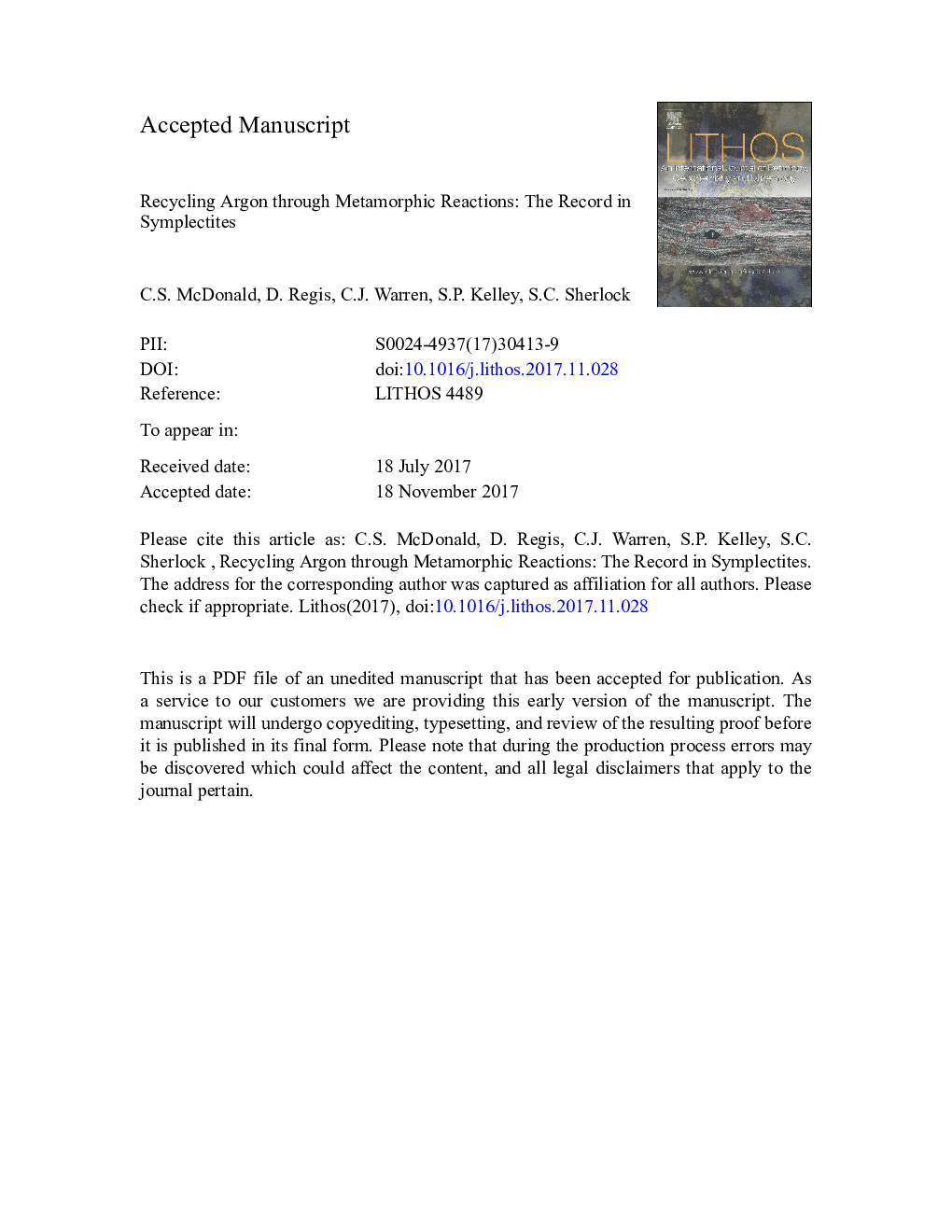| Article ID | Journal | Published Year | Pages | File Type |
|---|---|---|---|---|
| 8911760 | Lithos | 2018 | 60 Pages |
Abstract
The 40Ar/39Ar ages of metamorphic micas that crystallized at high temperatures are commonly interpreted as cooling ages, with grains considered to have lost 40Ar via thermally-driven diffusion into the grain boundary network. Recently reported laser-ablation data suggest that the spatial distribution of Ar in metamorphic micas does not always conform to the patterns predicted by diffusion theory and that despite high metamorphic temperatures, argon was not removed efficiently from the local system during metamorphic evolution. In the Western Gneiss Region (WGR), Norway, felsic gneisses preserve microtextural evidence for the breakdown of phengite to biotite and plagioclase symplectites during near isothermal decompression from c. 20-25 to c. 8-12 kbar at ~ 700 °C. These samples provide an ideal natural laboratory to assess whether the complete replacement of one K-bearing mineral by another at high temperatures completely 'resets' the Ar clock, or whether there is some inheritance of 40Ar in the neocrystallized phase. The timing of the high-temperature portion of the WGR metamorphic cycle has been well constrained in previous studies. However, the timing of cooling following the overprint is still much debated. In-situ laser ablation spot dating in phengite, biotite-plagioclase symplectites and coarser, texturally later biotite yielded 40Ar/39Ar ages that span much of the metamorphic cycle. Together these data show that despite residence at temperatures of ~ 700 °C, Ar is not completely removed by diffusive loss or during metamorphic recrystallization. Instead, Ar released during phengite breakdown appears to be partially reincorporated into the newly crystallizing biotite and plagioclase (or is trapped in fluid inclusions in those phases) within a close system. Our data show that the microtextural and petrographic evolution of the sample being dated provides a critical framework in which local 40Ar recycling can be tracked, thus potentially allowing 40Ar/39Ar dates to be linked more accurately to metamorphic history.
Related Topics
Physical Sciences and Engineering
Earth and Planetary Sciences
Geochemistry and Petrology
Authors
Christopher S. McDonald, Daniele Regis, Clare J. Warren, Simon P. Kelley, Sarah C. Sherlock,
